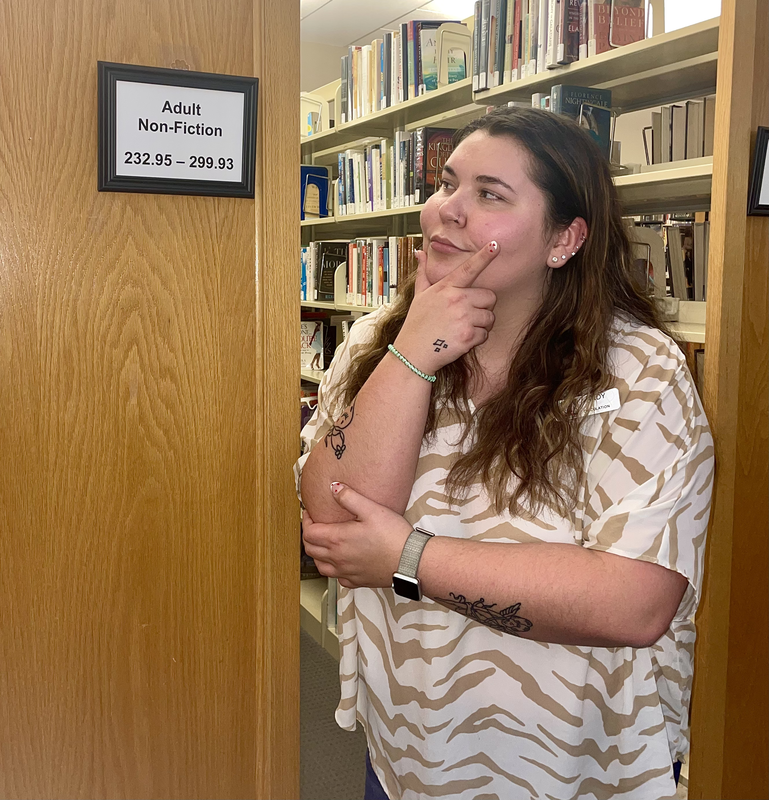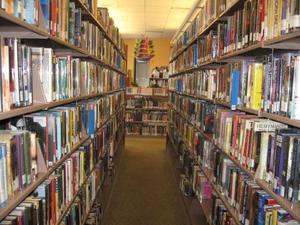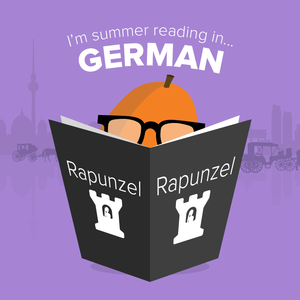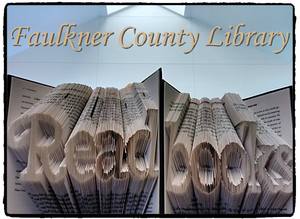Did you know we have 49,000+ Adult Fiction & 35,000+ Adult Non-Fiction titles in our system alone? Go to our Card Catalog to check out these titles and so much more, or come browse the stacks and find a new favorite!
CHOOSE YOUR LIBRARY

Blog
By Category
ARTICLES
Dewey What? How To Locate the Book You Need
Kenya Böes - Education and Recreation
January 27, 2023

POV: You hurry into the library in pursuit of a book that you need for your literature class, and the deadline to write an analytical essay on it is fast approaching. You discover from using the catalog on our website that, luckily, your local branch has it in stock. But when reading the description of its location, you see a random decimal number with some letters underneath, and have no idea what that means. You become officially lost in the stacks. Should you turn back the way you came and ask an employee at the front desk? Or do you dare to trek through the seemingly endless maze of books? You decide to continue onward, but then your surroundings change. Now you’re in a section where there’s no numbers and just letters??
This scenario might sound a little dramatic, but even in a smaller, one-story library it can be easy to get confused. This is where us librarians come in to save the day! We’re always happy to show you where anything is shelved and help you understand how our cataloging system works. You can come to us or we’ll be out on the floor asking if patrons like you need assistance! But if you’re wanting to know what the numbers and letters mean for yourself, you can potentially save some time, skip the frantic searching, and be the hero of your own story.
Here’s a rudimentary guide to navigating those strange library symbols:
The combination of letters and numbers are referred to as “call numbers.” Call numbers are found on a book’s spine label. Our books are categorized by the Dewey Decimal System, which is just a way to classify books based on their subject. Most public libraries use this system, while academic libraries utilize the Library of Congress classification, but we won’t get into that here.
Navigating Fiction
If you’re in the fiction section, it’s a bit easier to find a book. Books here are categorized in alphabetical order by the first three letters of the author's last name. So if you’re looking for “Along Came a Spider” by James Patterson for example, you would look for PAT and then once you found Patterson, you would search by title for “Along” since A comes first. However, if the title begins with an article such as “an” or “the”, you would use the next word!
The same goes for our large print section as well as our juvenile sections! If you’re looking for a particular genre, they are mixed in with all the others, so be sure to ask a librarian for recommendations if you don’t have a particular book in mind!
Navigating Nonfiction
Here’s where things get a little trickier: nonfiction has both numbers and letters. This is the Dewey Decimal System at work. Books here are categorized in numerical order, and each number represents a different subject grouped within a larger common topic. For instance, books shelved in the 100s will be on different topics than books in the 500s. Then if you choose a topic in the 100s, the 120s will be on a range of different subjects than, say, the 140s. It’s a lot of information to process, so we’ve created a handy list that details every section:

If you’re still unsure of where to look for a book after viewing this index, feel free to ask us! We can check the catalog, and we have memorized a lot of placements because of how often they’re asked about. Cookbooks? They’re in the 641.5s in Home & Family Management under “Technology.” ACT prep? The 378.1s in Education under “Social Sciences.”
As always, if you want a book or other item not found in our catalog, we can make an order request. We hope this helps you in your quest for the perfect book!




